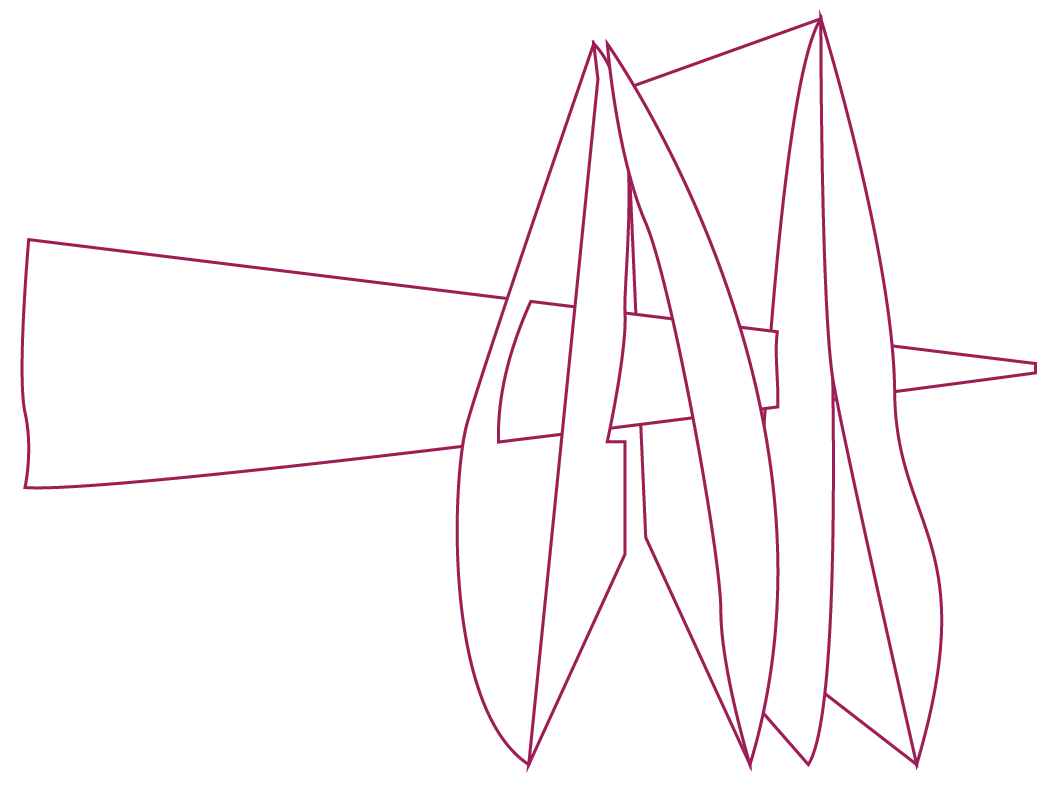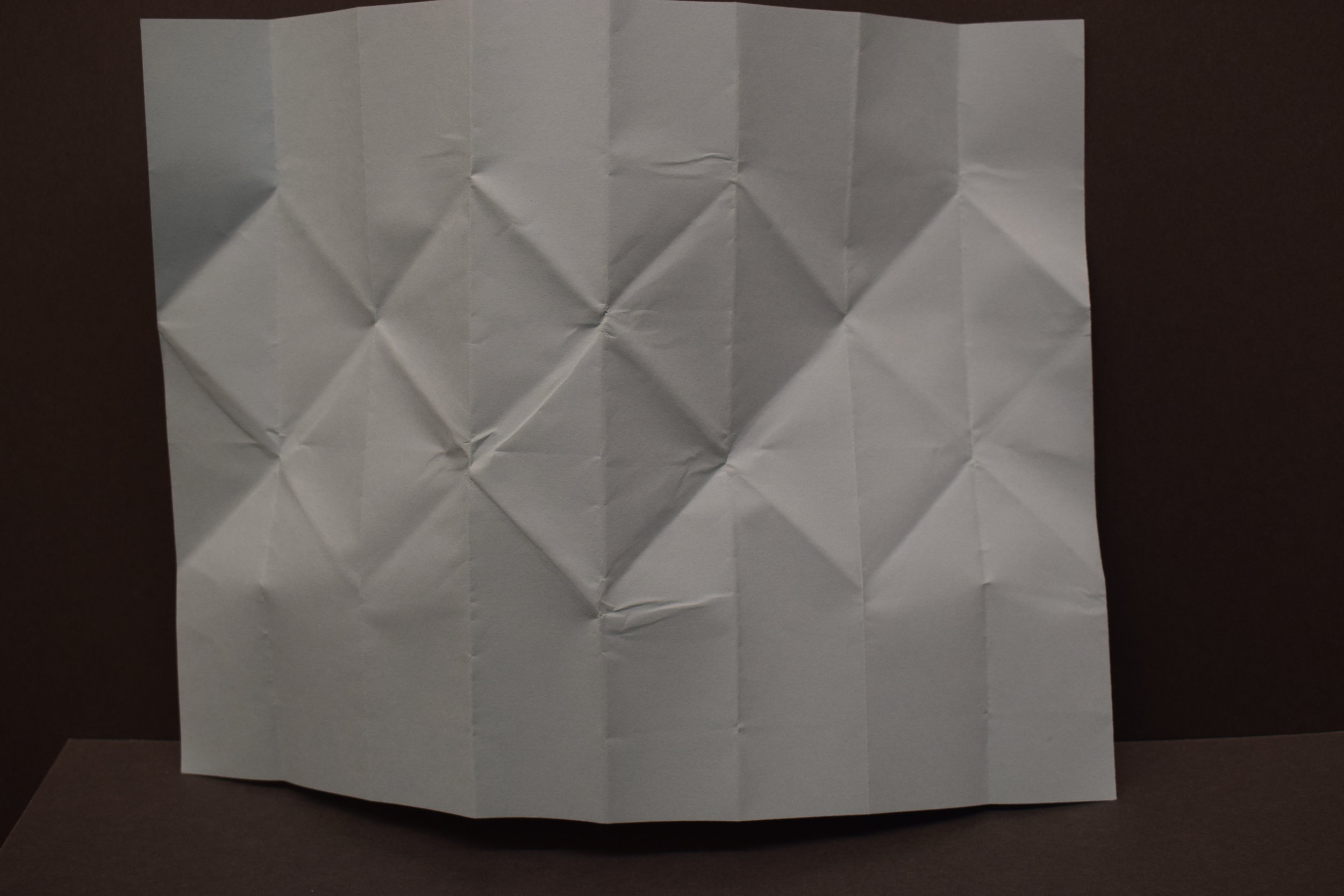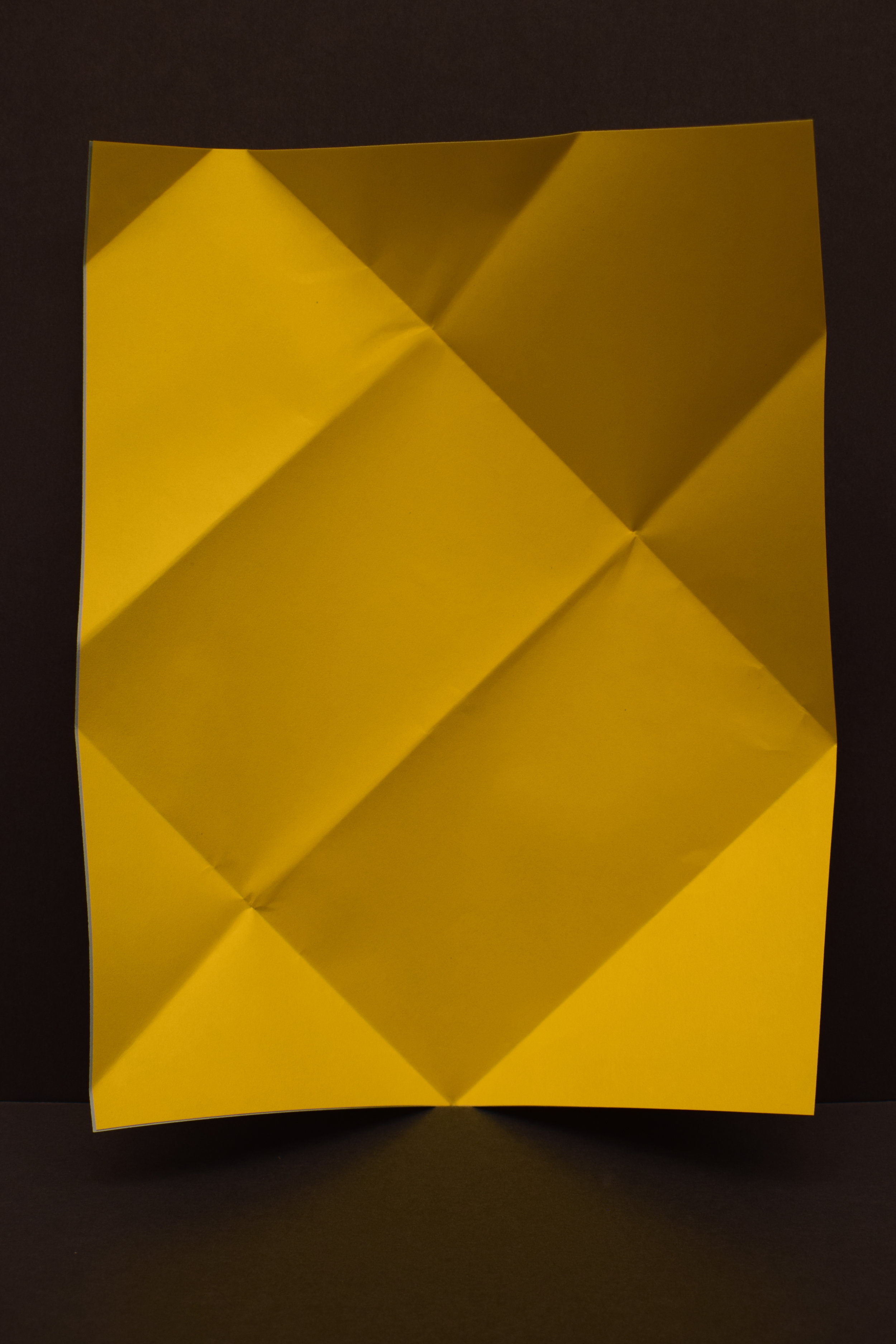Cite as: Jana Dambrogio, Daniel Starza Smith, et al. 2016–. Dictionary of Letterlocking (DoLL). Last updated: 30 December 2017. Date accessed: [Date]. Abbreviated on this page: (DoLL 2016). All images except when noted are courtesy of the Unlocking History Materials Collection.
Folds and Creases
A fold is arguably the most important manipulation in letterlocking, since it is used in every letterlocking category. The resulting physical mark left in the substrate is a crease.
Crease
The impression left in a substrate by a fold.
Crease vs Wrinkle
In letterlocking, creases are distinguished from wrinkles. Generally, a crease is the sharp mark left in a substrate by the action of folding, whereas wrinkles result from the substrate buckling and bending around a crease. Wrinkles may also point to damage, e.g. by water. Creases are distinguished from folds, which are the manipulations that produce creases. (DoLL 2017)
Crease assignment
The identification of a crease as either mountain or valley when a substrate is laid on a surface and viewed from above.
Assigned crease pattern
A pattern on which mountain and valley crease assignment has been labeled, or a drawn pattern replicating it.
An assigned crease pattern is important because it can help distinguish differences between letters which have the same crease pattern but produce different letterpackets. The differences in internal engineering are signaled by the directions of their folds.
Fold
The bending of a substrate over itself. A fold usually leaves a mountain crease or valley crease in the substrate. One of the principal manipulations of letterlocking, and the most commonly encountered.
Accordion Fold
A compound fold in which a series of repeating mountain and valley folds alternate to resemble the bellows of an accordion.
C Fold
A compound fold in which two outer edges of a substrate fold towards each other to create three overlapping panels. Opened, the substrate resembles the letter “C” when viewed from the side.
Catch Fold
A narrow edge fold used to “catch” or hook the edge of another panel or flap and hold it in place.
Closed gatefold
A compound fold in which a substrate is first gatefolded, then folded in half along the same axis so that all four panels are stacked on top of one another.
Closed rolled gatefold
A compound fold in which a substrate is gatefolded with a roll fold either side, then folded in half along the same axis so that all the panels are stacked on top of one another.
Corner Fold
A type of diagonal fold originating from the corner of a substrate, where two edges meet. The corner is pulled towards the center of the substrate, usually creating a triangular flap.
Compound fold
Two or more consecutive folds encountered so commonly that they can be referred to as a single fold, such as gatefold, C-fold, or Z-fold.
Diagonal Fold
A fold that runs at an oblique or obtuse angle to the edges of the substrate.
Dog-ear
A diagonal fold made at a corner to mark a place in a book, or unintentional damage to a folio or substrate that results in a diagonal fold or group of diagonal folds at the corners.
Double corner fold
A compound fold made up of two corner folds.
Double gatefold
A kind of gatefold in which the opposite edges of a substrate are roll-folded twice towards the center of a substrate (rather than once as in a standard gatefold).
Double Parallel Fold
A compound fold in which the substrate is folded in half, then folded in half again along the same axis.
Edge Fold
A fold made along one edge of a substrate, running parallel with that edge. The resulting crease is usually less than 25mm from the edge, helping to distinguish edge folds from other folds.
Flattened folds
A fold with mountain or valley crease assignment information that is no longer visible to the naked eye.
Gatefolds
A compound fold in which opposite edges of a substrate are folded towards the center of the substrate, creating the effect of two gate doors swinging shut.
Gutter fold
The fold joining the two panels of a bifolium; opposite the fore-edge. The term derives from printing: “gutter” refers to the white space between two blocks of text on a double-page spread.
Independent Folding
A method of folding in which two or more leaves of substrate lying on top of one another are folded separately and in a different manner from one another. When unfolded, the crease patterns on each leaf will differ. Independent folding is often seen on the two leaves of a conjugate bifolium.
Long-edge to long-edge fold
A lengthwise fold in which the long edges of a rectangular substrate meet.
Margin Fold
An edge fold used as a guideline for aligning text.
Mountain crease
A crease that points upwards when the substrate is laid flat.
Pushed-in fold
A mountain fold that has been pushed in, reversing or neutralizing the crease assignment. The pushing action creates at least two new creases, each usually at a 45 degree angle from the original.
Quartered fold
A compound fold in which the substrate is folded in half lengthwise or crosswise and then in half again along the opposite axis.
Radiating wrinkle
A series of curved wrinkles surrounding a crease.
Roll Fold
A compound fold in which a substrate is rolled onto itself two or more times in one direction, resulting in a series of parallel creases.
Rolled gatefold
A compound fold in which a substrate is gatefolded with a roll fold either side, rather than a single fold either side.
Short-edge to short-edge fold
A crosswise fold in which the short edges of a rectangular substrate meet.
Tandem Folding
A method of folding in which two or more leaves of substrate lying on top of each other are folded simultaneously and in the same manner and often seen on the two leaves of a conjugate bifolium.
Tri-panel fold
Any folding process in which a substrate is folded twice to create three panels. It is best practice in letterlocking to clarify which kind of trifold results: Z fold (alternating mountain and valley folds) or C fold (two parallel mountain or valley folds).
Valley crease
A crease that points downwards when the substrate is laid flat.
Z Fold
A method of folding in which a single mountain and valley fold alternate to create three panels that resemble the letter “Z” when viewed from the side. The Z fold is the simplest kind of accordion fold.
See also: Accordion Fold, Tri-folds
Wrinkle(s)
A planar deformation that occurs as a by-product of folding, especially in the case of intersecting or multi-layer folds. In letterlocking, wrinkles can be distinguished from folds, since folds are ridges made in a substrate in order to engineer a letter packet, and wrinkles signal the substrate’s natural response to manipulation. (DoLL 2017)
See also: crease and fold.
Click on DoLL to go back to the main Dictionary page.






